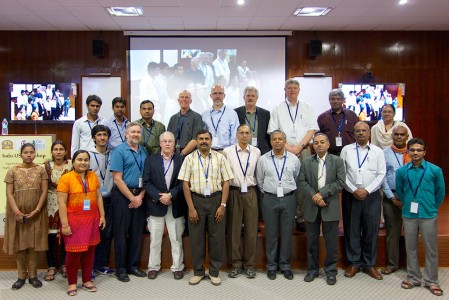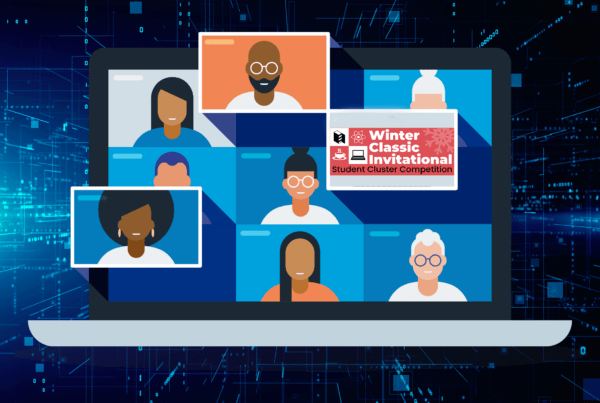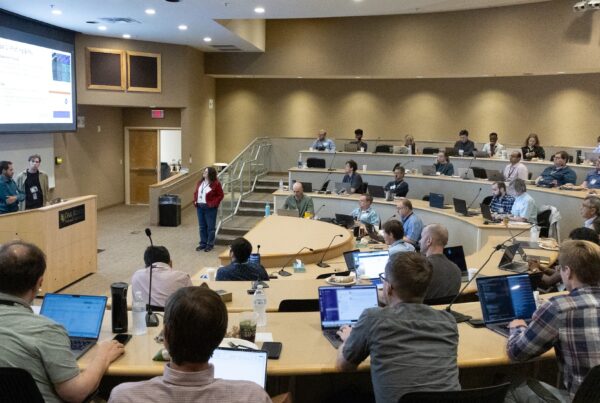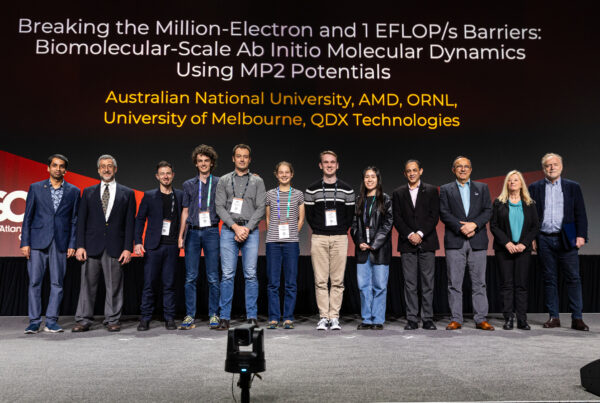
Computing experts from Oak Ridge National Laboratory (ORNL) recently met with their counterparts in India to share insights and look for collaboration opportunities.
India looks to other supercomputing leaders to see what challenges lie ahead.
Computing experts from Oak Ridge National Laboratory (ORNL) recently met with their counterparts in India to share insights and look for collaboration opportunities.
India has a substantial supercomputing program. The country has 12 systems on the TOP500 list of the world’s most powerful supercomputers, more than all but six other countries. Furthermore, India is seriously devoted to expanding its program.
“They are putting together somewhere between 800 million and 1 billion US dollars” specifically for supercomputing, said ORNL’s Bobby Philip, who worked off-site in India organize the conference.
As India ramps up its program, the country is looking at other supercomputing leaders to see what challenges lie ahead. Gil Weigand, director of strategic programs with ORNL’s Computing and Computational Sciences Directorate, went on the trip to discuss energy issues. “They have a similar set of problems as we do, and just because we’re a bigger effort, we’ve thought about them more. By learning from us, they can do better as they move ahead,” he said.
OLCF Director of Science Jack Wells, who represented materials science at the meeting, agrees. Wells gave a talk regarding the role of petascale computing in materials science. “Our experience with building and operating high-powered computing systems can help them develop useful user systems and operational interfaces,” he said.
India has much to offer us as well. With its substantial computing power and large pool of human resources, collaboration could prove useful to both parties. James Hack, director of the National Center for Computational Sciences at ORNL, went on the trip to discuss climate science applications.
“We’ve been looking for opportunities to collaborate with our Indian colleagues on high-performance computing,” he said. “This trip was an opportunity for us to discuss areas where it would be mutually beneficial for the two institutions to formalize those collaborations.”
Hack and his colleagues identified multiple areas for future collaboration, including exploration of faster input and output to and from supercomputers, research regarding the dynamics of the Indian monsoon (a weather system that powerfully influences the Indian economy, especially agriculture), research regarding aerosol cloud microphysics, and figuring out how best to use supercomputers with heterogeneous architectures like the hybrid CPU/GPU structure of Titan, OLCF’s supercomputer.
Barney Maccabe, director of ORNL’s Computer Science and Mathematics Division, went on the trip to discuss opportunities for computational science collaboration, which he was able to identify. He said both nations could benefit if they worked together on computer resilience—ensuring that computer systems can produce valid results even in the face of machine failure. Other areas of potential collaboration include designing tools to accurately predict application performance on new computing platforms and defining parts of the emerging OpenACC standard.
Wells and colleagues identified computational membrane biophysics, the simulation and study of biological membranes, as an area for research collaboration.
Weigand said he also sees potential for collaboration. “They don’t have the infrastructure we have, so they can think out of the box,” he said, adding that India has a unique perspective on supercomputing because most of its supercomputers were developed and built within the country. Weigand said this perspective may be valuable to American supercomputing: looking at how they solved the same types of problems as we have may give us insight as we continue to advance our computing technology.
US participants at the meeting included officials from Lockheed Martin, NVIDIA, GE Global Research, the Environmental Protection Agency, and the Georgia Institute of Technology. In addition to the Indian Institute of Science, India’s Center for Development of Advanced Computing had a significant role at the conference.
Participants will have an opportunity to discuss things again this year. Maccabe says that ORNL representatives hope to get back together with Indian supercomputing organizations during one of the European computing conferences in 2014. —Timothy Metcalf






